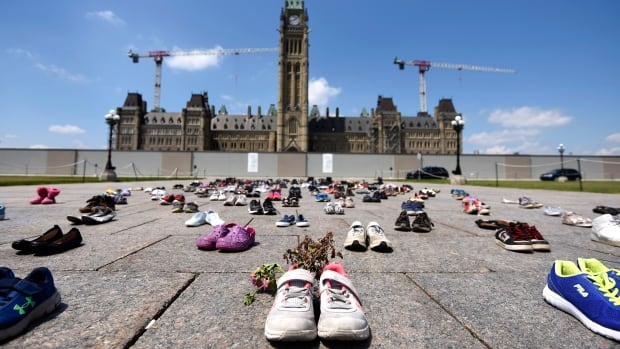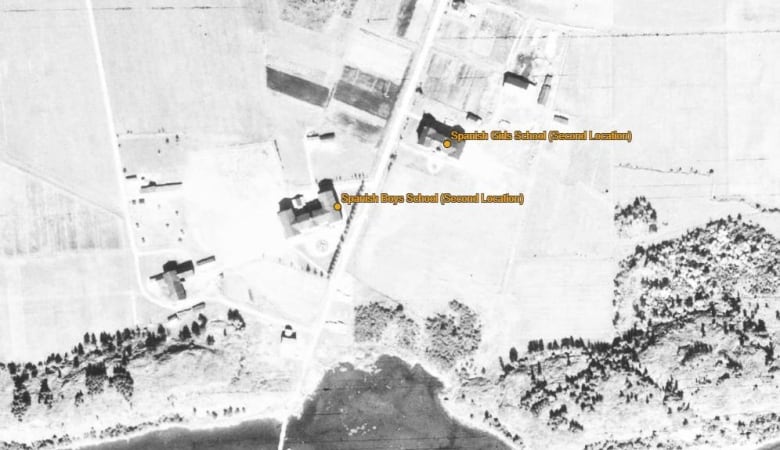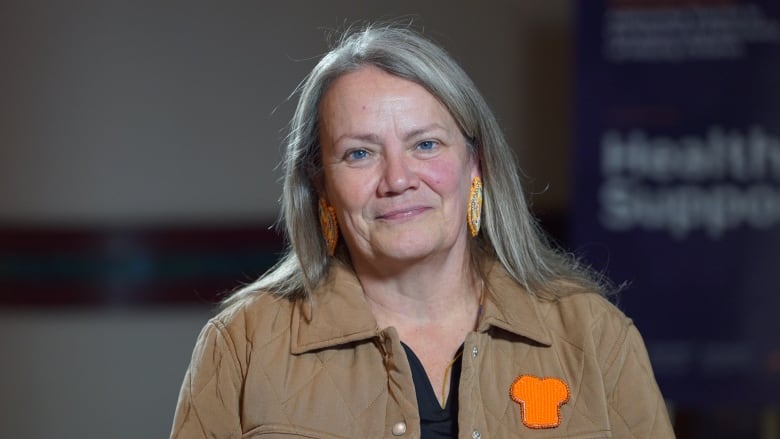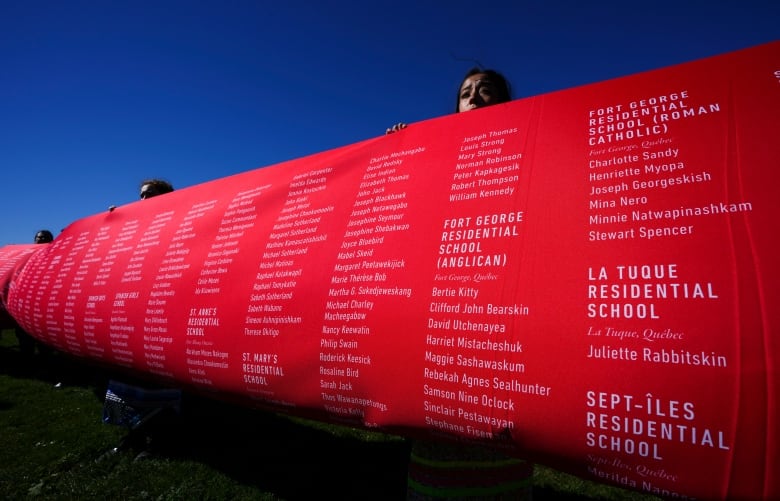
The Canadian government has launched a new interactive online map pinpointing the location of residential schools, and experts say it will help in the search for unmarked or forgotten graves of children forced to go to the institutions.
Many residential school buildings have been torn down, paved or built over since the first one opened in Canada in the 1830s and the last one closed in the mid-1990s.
The Indian Residential Schools Interactive Map will help searchers get accurate locations of former buildings.
“It’s a very valuable resource,” said Andrew Martindale, an anthropology professor at the University of British Columbia (UBC).
“If we find evidence of a cemetery or a burial, and we know where it is relative to buildings in the 1930s, we can use this kind of information to say: ‘Where is this today?'”

Martindale said it’s challenging to get information from jurisdictions about the history of former residential school land, including how it changed and the names of the the landowners.
“If we’re off by even a metre, it can have consequences in the work that we do,” said Martindale, a member of the National Advisory Committee on Residential Schools Missing Children and Unmarked Graves.
The free mapping tool includes contemporary and historical aerial photos, giving users an opportunity to visualize where the institutions operated and what they looked like.
A window into the past
More than 100 Indigenous communities are involved in residential schools grave searches, and they had to pay to access aerial maps from libraries and obtain records through access-to-information requests with government institutions, said Kimberly Murray, independent special interlocutor for missing children in unmarked burials.
While the tool may come too late to help ongoing community searches, Murray said every new bit of data helps while looking for lost children.
“The more information that is out there for communities, the better,” said Murray. “But I do think that Canada hasn’t gone far enough in what it’s made available.”

Approximately 150,000 First Nations, Inuit and Métis were removed from their families during the time residential schools operated. Ottawa had used the Indian Act to force children to attend the government-funded to be indoctrinated into Euro-Christian Canadian society.
Many children were subjected to physical, psychological and sexual abuse.
The interactive map excludes many institutions that subjected Indigenous children to the same harms as residential schools.
The tool doesn’t list Indian hospitals, tuberculosis sanatoriums, day schools or boarding schools not funded by the federal government.
These institutions weren’t included in the $1.9-billion Indian Residential School Settlement Agreement, which required the government to compile and turn over records to the Truth and Reconciliation Commission documenting the history of the institutions.
New tool could help counter residential school denialism
Tricia Logan, interim academic director at the Indian Residential School History and Dialogue Centre at the University of British Columbia, said she hopes the map gets updated with all institutions that were used to assimilate Indigenous children.
“Anything that’s made more available … a little bit more transparent is always so helpful and supportive to Nations and communities that are doing that research right now,” said Logan, who’s also an assistant professor in First Nations and Indigenous Studies at UBC.
The map doesn’t include any information about residential schools in Newfoundland and Labrador. In 2017, Prime Minister Justin Trudeau apologized to residential school survivors in that province following a $50-million settlement agreement after they were left out because the federal government did not run boarding schools in their province.
Another notable absence from the list is the former boarding school in Île-à-la-Crosse, Sask., which continues to be a source of disagreement between the federal and Saskatchewan governments over who shoulders responsibility.

Despite the missing information, Logan said the data the government has made available could help counter misinformation and disinformation about residential schools, known as denialism.
“Maps like that provided by government sources … helps to kind of confront those claims of very often very malicious misinformation or disinformation that arises,” Logan said.
CBC News asked for an interview with Indigenous Services Minister Patty Hajdu, but she was not available.
In a news release, Hajdu said the map will empower survivors and communities.
“People in Canada for too long have had the truth of colonialism hidden from them, harming us all, and delaying the healing that is essential to our country’s health and prosperity,” Hajdu said.
A national Indian Residential School Crisis Line is available to provide support for survivors and those affected. People can access emotional and crisis referral services by calling the 24-hour service at 1-866-925-4419.
Mental health counselling and crisis support is also available 24 hours a day, seven days a week through the Hope for Wellness hotline at 1-855-242-3310 or by online chat.